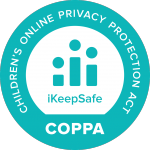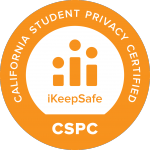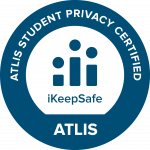In an increasingly digital world, robotics education has evolved from a niche interest to an essential component of modern learning. Teaching robotics to young minds isn’t just about assembling mechanical parts; it’s about fostering critical thinking, creativity, and problem-solving skills that will serve students throughout their lives.
Whether you’re an experienced STEM educator looking to expand your toolkit or a newcomer eager to introduce robotics to your classroom, this guide offers age-appropriate strategies and activities to engage learners at every developmental stage.
Why Robotics Matters in Education
Robotics education offers a unique blend of hands-on learning, computational thinking, and creative expression. Students develop:
- Problem-solving skills through debugging and iteration
- Collaboration abilities via team-based projects
- Technical literacy in coding and engineering concepts
- Communication skills when presenting their creations
- Confidence through tangible, interactive achievements
Kindergarten–2nd Grade: Play Meets Purpose
Young learners approach the world with boundless curiosity and imagination. At this foundational stage, robotics should feel magical and exploratory, introducing basic concepts through play-based learning.
Key Focus Areas:
- Cause and effect relationships
- Sequential thinking
- Basic storytelling and narrative structure
- Following simple directions
Engaging Activities:
Introduction to Color Codes 01: Basic Training: Start with fundamentals by teaching students how to turn their Ozobot on and off, calibrate it properly, draw effective lines, and program using Color Codes. This foundational lesson builds confidence and technical understanding (ISTE 1. d, CSTA 1A-CS-02, CSTA 1A-DA-05).
Who Can Find the Pot of Gold: This engaging game challenges students to program their Ozobot to navigate and find treasure. Originally designed for St. Patrick’s Day, this adaptable activity works year-round and introduces goal-oriented programming thinking.
Do You Want to Build a Snowman?: Combine creativity with coding as students use directional color codes to guide their robot past different snowman components, “collecting” parts before drawing their creation. This activity beautifully integrates art, sequencing, and programming logic (CSTA.1B-AP-15, CSTA.1B-AP-08).
Subject Integration: Seamlessly blend robotics with core academics. Program robots to hop along number lines for math practice, visit letter stations for phonics work, or explore different habitats in science lessons.
Hands-On Materials: Utilize magnetic coding pieces and reusable challenge mats to create tactile programming experiences that young hands can manipulate and rearrange.
Grades 3–5: Skills and Structure
Elementary students are ready to transition from pure discovery to more structured problem-solving. This is where robotics becomes a powerful vehicle for developing computational thinking while maintaining the joy of creation.
Key Focus Areas:
- Introduction to programming logic
- Basic loops and conditional thinking
- Collaborative problem-solving
- Reflection and iteration
Enriching Activities:
Introduction to Ozobot Blockly 07: Skills Check 2: Students demonstrate their mastery of loops and conditionals by programming their bot using OzoBlockly to navigate and complete challenging mazes, reinforcing computational thinking concepts (CSTA.1B-AP-10, ISTE.1.d).
Maze Game Adventures: Challenge students to program their Ozobot to find hidden treasure in various maze configurations. This competitive element adds excitement while building problem-solving skills and spatial reasoning (CSTA 1A-AP-12, CSTA 1A-AP-10).
Comparing Fractions with Ari: Integrate mathematics seamlessly by using Ari robot and bowling pins to help students visualize and compare fractions. Students determine numerators, create models, and make mathematical comparisons through hands-on robotics activities (CSTA.1B-DA-06, CCSS.MATH.CONTENT.4.NF.A.2, CCSS.MATH.CONTENT.3.NF.A.3).
Cross-Curricular Connections: Design math races where robots solve equations, science scavenger hunts exploring different concepts, or language arts adventures where bots act out vocabulary words.
Learning Documentation: Encourage students to maintain reflection journals, documenting their discoveries, challenges, and problem-solving strategies through writing and drawing.
Grades 6–8: Innovation and Independence
Middle school represents a crucial transition period where students crave independence and real-world relevance. Robotics programs can channel this energy into collaborative innovation and deeper technical understanding.
Key Focus Areas:
- Advanced programming concepts
- Sensor integration and conditional logic
- Team-based project management
- Design thinking methodology
Dynamic Approaches:
Data Input via Proximity Sensors: Teach students to use proximity sensors for data input, allowing them to enter numbers and information that can be utilized across multiple programs, introducing real-world sensor applications.
Hockey Simulator Level 1 Movement: Guide students through building an autonomous hockey simulation using conditionals, loops, and sensors. This comprehensive project demonstrates complete program development while teaching advanced movement concepts (CSTA.2-AP-12, CSTA.2-AP-13, CSTA.2-DA-08, ISTE.1.c).
“Pop Star” Performance Programming: Transform Ozobots into entertainers by programming concert performances using Blockly. Students code three signature dance moves, then use functions to orchestrate complete performances, combining creativity with technical programming skills (CSTA.2-AP-14, ISTE.6.b).
Problem-Based Design: Present authentic challenges like environmental protection or community assistance, encouraging students to develop robotic solutions through design thinking processes.
Grades 9–12: Engineering the Future
High school students are ready to engage with robotics as a legitimate pathway to future careers and advanced technical skills. This stage connects classroom learning with real-world applications and professional preparation.
Key Focus Areas:
- Text-based programming languages
- Advanced engineering principles
- Career pathway exploration
- Leadership and mentorship
Professional Preparation:
“Future Burger” Production Optimization: Challenge students to use Ozobots to analyze and optimize production line efficiency for future food service, introducing concepts of industrial automation, workflow analysis, and process improvement that mirror real-world engineering challenges.
Evo Simulates a Garden Robot: Using OzoBlockly and modular design principles, students construct sophisticated garden robots that simulate crop planning, seed planting, and watering systems. This comprehensive project integrates environmental science, agricultural technology, and advanced programming concepts (CSTA.2-CS-02, CSTA.2-AP-11, CSTA.2-AP-12, CSTA.2-AP-13, CSTA.2-AP-14, CSTA.2-AP-19, CSTA.3A-DA-11, CSTA.3A-AP-17, CSTA.3B-AP-22, CSTA.3B-AP-23, CSTA.3A-AP-14).
“OzoBlockly Challenge: Walking in Squares”: Engage students in advanced algorithmic thinking by programming Ozobot to execute complex geometric patterns. This challenge develops precision programming skills and mathematical reasoning while exploring advanced movement algorithms (CSTA.2-CS-02, CSTA.2-AP-11, CSTA.2-AP-12, CSTA.2-AP-19, CSTA.3B-AP-23).
Career Connections: Integrate lessons with emerging fields in AI, automation, healthcare technology, and engineering, helping students understand the professional landscape they might enter.
Leadership Development: Encourage students to mentor younger peers, lead robotics clubs, or organize school-wide demonstrations, building communication and leadership skills alongside technical expertise.
Universal Best Practices for Robotics Education
Regardless of student age, certain principles make robotics programs more effective and inclusive:
Embrace the Learning Process
Frame challenges and “bugs” as valuable learning opportunities rather than failures. This mindset shift helps students develop resilience and problem-solving confidence.
Foster Inclusion
Use diverse examples and scenarios that reflect all students’ experiences. Allow for multiple solution paths and adapt activities to accommodate different learning styles and abilities.
Build Community Connections
Host family robotics nights, invite industry professionals as guest speakers, and showcase student projects to broader school communities, creating excitement and support for STEM learning.
Start Accessible, Scale Thoughtfully
Remember that meaningful robotics education doesn’t require extensive equipment budgets. A few well-chosen robots combined with creative lesson design can create powerful learning experiences.
The Impact of Robotics Education
When implemented thoughtfully across grade levels, robotics education transforms how students approach challenges both inside and outside the classroom. Students develop not just technical skills, but also the confidence to tackle complex problems, collaborate effectively with others, and think creatively about solutions.
From the kindergartner who discovers that drawing different colored lines makes their robot behave in fascinating ways, to the high school senior who designs an assistive robot for community members with disabilities, robotics education plants seeds of innovation that can grow throughout students’ lives.
As educators, our role is to nurture this growth by providing age-appropriate challenges, celebrating creative thinking, and connecting classroom learning to the broader world of possibilities that robotics and technology offer.
The future belongs to creative problem-solvers, collaborative innovators, and thoughtful technologists. Through quality robotics education, we’re helping students become all three.









